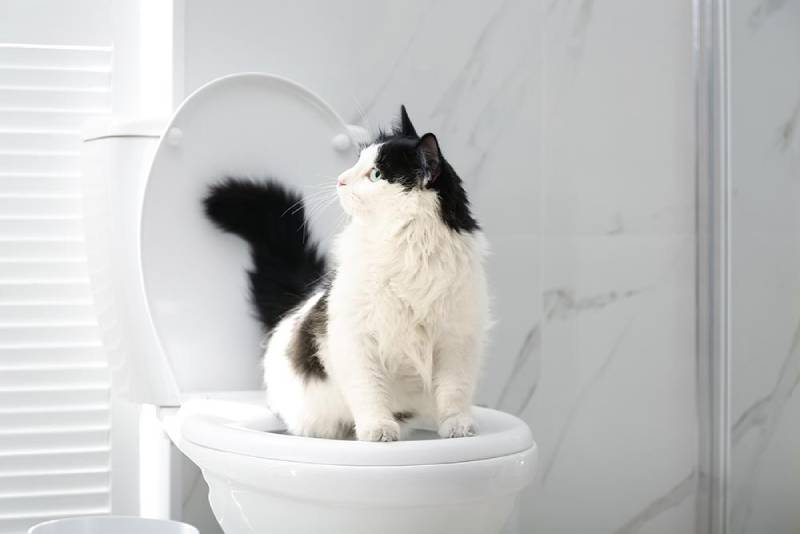Reasons You Should Never Flush Cat Poop Down Your Toilet - Important Information
Book An AppointmentWhat are your thoughts concerning Don’t flush cat feces down the toilet?

Intro
As cat owners, it's vital to be mindful of exactly how we take care of our feline close friends' waste. While it may appear practical to flush pet cat poop down the bathroom, this method can have detrimental repercussions for both the atmosphere and human health and wellness.
Alternatives to Flushing
The good news is, there are more secure and more accountable ways to take care of cat poop. Take into consideration the following choices:
1. Scoop and Dispose in Trash
One of the most typical technique of taking care of feline poop is to scoop it into a biodegradable bag and throw it in the garbage. Make certain to make use of a specialized trash scoop and deal with the waste promptly.
2. Use Biodegradable Litter
Opt for biodegradable feline trash made from products such as corn or wheat. These clutters are environmentally friendly and can be safely dealt with in the trash.
3. Bury in the Yard
If you have a yard, take into consideration hiding feline waste in an assigned area away from vegetable gardens and water sources. Make sure to dig deep enough to avoid contamination of groundwater.
4. Mount a Pet Waste Disposal System
Invest in a pet garbage disposal system specifically made for cat waste. These systems use enzymes to break down the waste, lowering odor and ecological impact.
Wellness Risks
Along with environmental worries, purging pet cat waste can also present health dangers to humans. Cat feces might have Toxoplasma gondii, a bloodsucker that can trigger toxoplasmosis-- a possibly serious disease, particularly for expectant ladies and people with damaged immune systems.
Environmental Impact
Purging feline poop introduces dangerous microorganisms and parasites right into the water supply, positioning a considerable threat to aquatic ecological communities. These contaminants can negatively impact marine life and concession water top quality.
Conclusion
Accountable pet dog possession expands past offering food and shelter-- it also involves appropriate waste administration. By avoiding purging feline poop down the toilet and selecting alternative disposal techniques, we can lessen our environmental footprint and shield human health.
Why Can’t I Flush Cat Poop?
It Spreads a Parasite
Cats are frequently infected with a parasite called toxoplasma gondii. The parasite causes an infection called toxoplasmosis. It is usually harmless to cats. The parasite only uses cat poop as a host for its eggs. Otherwise, the cat’s immune system usually keeps the infection at low enough levels to maintain its own health. But it does not stop the develop of eggs. These eggs are tiny and surprisingly tough. They may survive for a year before they begin to grow. But that’s the problem.
Our wastewater system is not designed to deal with toxoplasmosis eggs. Instead, most eggs will flush from your toilet into sewers and wastewater management plants. After the sewage is treated for many other harmful things in it, it is typically released into local rivers, lakes, or oceans. Here, the toxoplasmosis eggs can find new hosts, including starfish, crabs, otters, and many other wildlife. For many, this is a significant risk to their health. Toxoplasmosis can also end up infecting water sources that are important for agriculture, which means our deer, pigs, and sheep can get infected too.
Is There Risk to Humans?
There can be a risk to human life from flushing cat poop down the toilet. If you do so, the parasites from your cat’s poop can end up in shellfish, game animals, or livestock. If this meat is then served raw or undercooked, the people who eat it can get sick.
In fact, according to the CDC, 40 million people in the United States are infected with toxoplasma gondii. They get it from exposure to infected seafood, or from some kind of cat poop contamination, like drinking from a stream that is contaminated or touching anything that has come into contact with cat poop. That includes just cleaning a cat litter box.
Most people who get infected with these parasites will not develop any symptoms. However, for pregnant women or for those with compromised immune systems, the parasite can cause severe health problems.
How to Handle Cat Poop
The best way to handle cat poop is actually to clean the box more often. The eggs that the parasite sheds will not become active until one to five days after the cat poops. That means that if you clean daily, you’re much less likely to come into direct contact with infectious eggs.
That said, always dispose of cat poop in the garbage and not down the toilet. Wash your hands before and after you clean the litter box, and bring the bag of poop right outside to your garbage bins.
https://trenchlesssolutionsusa.com/why-cant-i-flush-cat-poop/

We had been brought to that editorial on Can You Flush Cat Poop Down The Toilet? from a friend on another website. Sharing is good. One never knows, you might be helping someone out. Thank you so much for taking the time to read it.
Get An Estimate